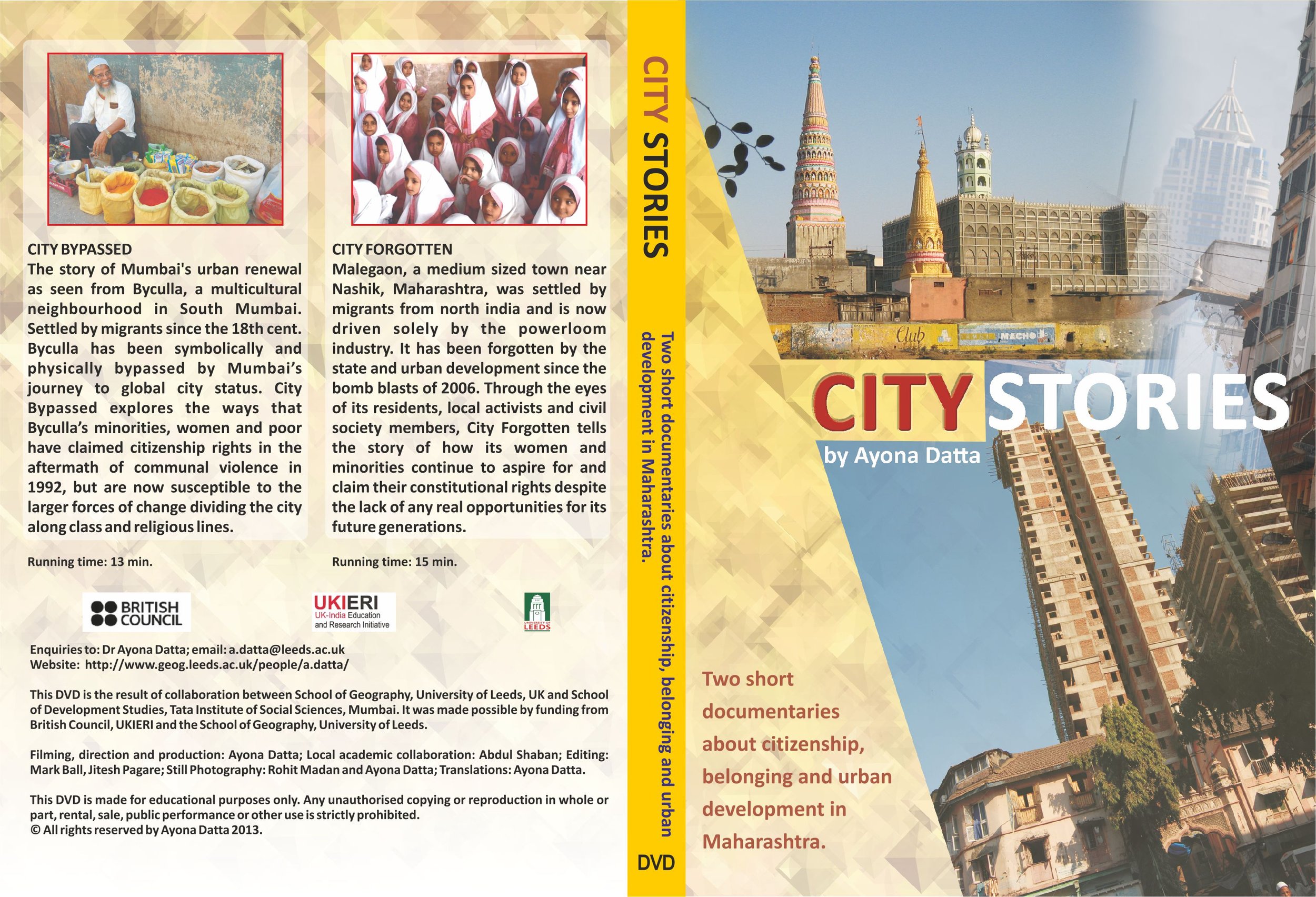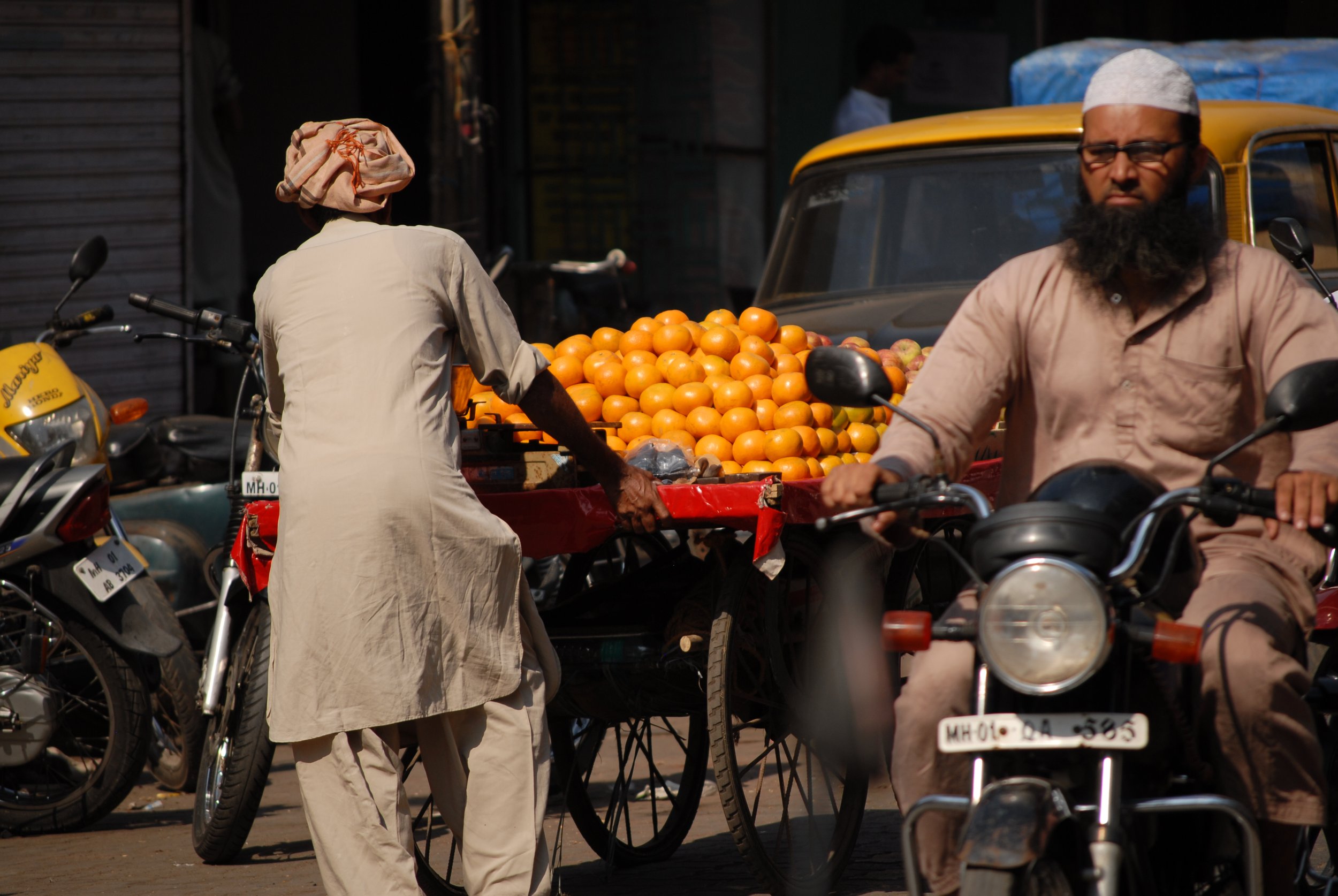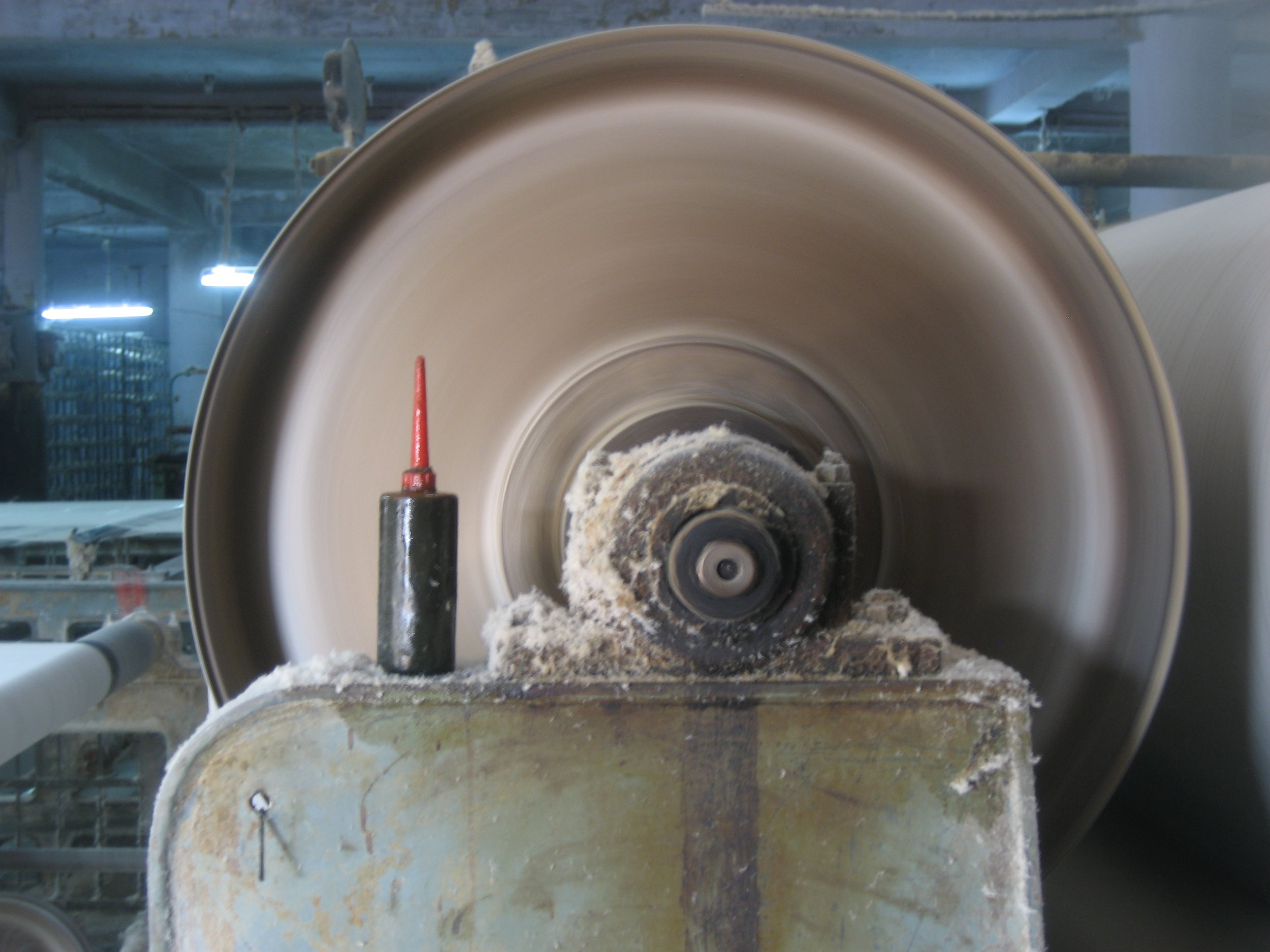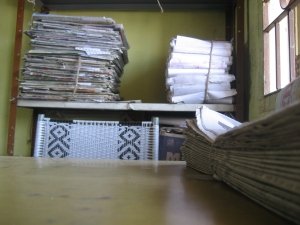The making of City Stories: Two mini-documentaries on citizenship, belonging and urban development in Maharashtra, India
 It has been a long arduous road, but I am pleased to say that 'City Stories' is out now on dvd. It features two short documentaries on urban development in Maharashtra. Both these documentaries tell different sides of the story of urban development from the perspective of those pushed to the margins in a postcolonial neoliberal state.
It has been a long arduous road, but I am pleased to say that 'City Stories' is out now on dvd. It features two short documentaries on urban development in Maharashtra. Both these documentaries tell different sides of the story of urban development from the perspective of those pushed to the margins in a postcolonial neoliberal state.
A dearth of visual teaching aids
These two documentaries came about as a result of my disappointment in the dearth of visual teaching aids on citizenship, belonging and urban development for higher education teaching. I teach on these topics, yet it is difficult to find visual teaching aids through which the social, cultural and gendered impacts of urbanization and urban development, particularly in the global south can be introduced, discussed and debated with students.I have for a long time been a strong proponent of visual methodologies in my research. The dearth of visual teaching aids led me to think of ways to link my research and teaching much more explicitly through visual methodologies. In 2010, I went on an ESRC-ICSSR scholar exchange visit to Tata Institute of Social Sciences (TISS) in Mumbai, where I became interested in the theme of urbanization in this region. This year in December, I will be taking University of Leeds undergraduate students in human geography for a visit to Mumbai. It seemed appropriate to link these aspects of research and teaching by the making of visual teaching aids. Fortunately I was funded by the UK-India Education Research Initiative and British Council to make low budget, low technology visual teaching aids on this theme.
City Stories
I began with the notion that these mini-documentaries would tell the story of urban development in Maharashtra - a regional state in India which has Mumbai as its capital to boast and in recent years has seen rapid urbanization unsurpassed in India's history. My collaborator in TISS, Prof. Abdul Shaban had prepared a number of reports for the Indian Minority Commission on Muslims in India. During our brainstorming sessions, he highlighted two sites - Byculla and Malegaon. Byculla is an inner city neighbourhood in South Mumbai, close to the business district hence facing rapid urban renewal, yet divided along various lines of religious, caste and community; and Malegaon a medium-sized single economy town approximately 300 km from Mumbai, relying on the powerloom sector but left behind by urban development. These appeared to me at first sight as very different, yet as I learned more about them, the more they seemed to tell different sides of the story of urbanization and urban development. City Stories therefore came about as a way to link two divergent experiences of urban development and urbanization from the perspective of - a neighbourhood 'bypassed' by the global aspirations of Mumbai, and a medium-sized town close to the globalising city but largely 'forgotten' by the state. City stories tells the fate of those minority neighbourhoods and towns marked by the stigma of communalism and parochialism, which thwarts investment and development from the public and private sector.
Making the 'mini-docs'
These two mini-documentaries were made on a very tight budget. These are low-cost, low technology, low time and low manpower documentaries. I took all the shots on a HD quality flipcam, while being shown around these places by my collaborator Prof. Abdul Shaban and local facilitators and/or residents who had in-depth knowledge of the local history and politics of these places. The entire shooting of Byculla was done in one day and of Malegaon in two days, in both places starting from early morning and continuing till midnight.Once the shoots were completed it took me many months of storyboarding and preliminary editing till I arrived upon the rough cuts of the two films. I was fortunate that the 'Student Experience Fund' in the School of Geography at University of Leeds was able to fund the purchase of Adobe Premier Pro CS6 software for the editing and the time of my undergraduate student Mark Ball who did a stellar job editing the first film 'City bypassed' on Byculla.The final editing of the second film 'City forgotten', the cover design and duplication of dvds was done by Abhivyakti a media based NGO in Nashik (about 200 km from Malegaon) who have been working with low-cost media technologies in bringing about gendered transformations among indigenous and tribal communities.
The road ahead for Byculla and Malegaon
 Byculla has an intensely cosmopolitan past that links it with Bombay's colonial and migrant history. It used to be a prosperous suburb of Bombay with British and Parsi residences, and was also the site of the first residential club of the British called the Byculla Club (pictures of which are now in the Victoria and Albert Museum in London). The decline of Byculla began after the textile mills arrived in the mid 19th century and pushed the middle-classes to the more desirable Malabar Hill neighbourhood in South Mumbai. Settled largely by mill workers, migrant workers and minority populations, Byculla developed a notorious reputation since the 1980s as the hotbed of the underworld and since the 1990s as the breeding ground of communalism and religious violence. The documentary suggests that Byculla residents continue to struggle and challenge these larger forces that attempt to divide them, but in the long run will 'either be susceptible to these larger forces or the government will bypass them (with flyovers and bridges)' [Prof. Abdul Shaban]. The road ahead for Byculla's urban renewal may be linked to Mumbai's global aspirations, yet its relationship to India's communal politics can only be resolved with the presence of strong inter-community relationships and women's social organization as they are slowly emerging in and around this neighbourhood.
Byculla has an intensely cosmopolitan past that links it with Bombay's colonial and migrant history. It used to be a prosperous suburb of Bombay with British and Parsi residences, and was also the site of the first residential club of the British called the Byculla Club (pictures of which are now in the Victoria and Albert Museum in London). The decline of Byculla began after the textile mills arrived in the mid 19th century and pushed the middle-classes to the more desirable Malabar Hill neighbourhood in South Mumbai. Settled largely by mill workers, migrant workers and minority populations, Byculla developed a notorious reputation since the 1980s as the hotbed of the underworld and since the 1990s as the breeding ground of communalism and religious violence. The documentary suggests that Byculla residents continue to struggle and challenge these larger forces that attempt to divide them, but in the long run will 'either be susceptible to these larger forces or the government will bypass them (with flyovers and bridges)' [Prof. Abdul Shaban]. The road ahead for Byculla's urban renewal may be linked to Mumbai's global aspirations, yet its relationship to India's communal politics can only be resolved with the presence of strong inter-community relationships and women's social organization as they are slowly emerging in and around this neighbourhood. Malegaon has a similar history of migration and decline. Known as the Manchester of India, it has been known for its powerloom industry and settled since the 19th century by migrants from North India. Yet recent bomb blasts and the (mis)representation of its communal politics in the media has resulted in what one of the participants Aleem Faizee called 'stepmother treatment' of Malegaon by the regional state of Maharashtra. Denied any investment in development or legitimate subsidies for industrial modernization, or any attempts to integrate Malegaon within state based development programmes, Malegaon is remains forgotten by both public and private sectors. Yet, there is some good news for Malegaon. A recent Tehelka article on the state of primary education in India finds that the quality of education in government schools in India as been steadily declining, with students even in year 4 and 5 unable to read, write or count. In this context, Malegaon is fortunate enough to have a school and college for Muslim girls. Students from this college interviewed in the film spoke eloquently about the different ways that underdevelopment and marginalisation has gendered and communal impacts that in the long-term divides communities even further. There may yet be hope for Malegaon as participants suggest - Prof. Shaban's report to the Minorities Commission has made a number of recommendations for urban development in the town, including more schools, hospitals and other social and physical infrastructure and there has emerged a strong network of inter-faith community workers who are changing attitudes through dialogue and discussion across religious groups.The mini-doc on Byculla 'City bypassed' (13 mins) was published in openDemocracy and was so popular that it was made its front page feature on 7th August 2013. I also wrote a longer piece about City bypassed in my blog. It has been played over 400 times on Vimeo so far. The mini-doc on Malegaon 'City forgotten' (15 mins) will be published in openDemocracy end August.
Malegaon has a similar history of migration and decline. Known as the Manchester of India, it has been known for its powerloom industry and settled since the 19th century by migrants from North India. Yet recent bomb blasts and the (mis)representation of its communal politics in the media has resulted in what one of the participants Aleem Faizee called 'stepmother treatment' of Malegaon by the regional state of Maharashtra. Denied any investment in development or legitimate subsidies for industrial modernization, or any attempts to integrate Malegaon within state based development programmes, Malegaon is remains forgotten by both public and private sectors. Yet, there is some good news for Malegaon. A recent Tehelka article on the state of primary education in India finds that the quality of education in government schools in India as been steadily declining, with students even in year 4 and 5 unable to read, write or count. In this context, Malegaon is fortunate enough to have a school and college for Muslim girls. Students from this college interviewed in the film spoke eloquently about the different ways that underdevelopment and marginalisation has gendered and communal impacts that in the long-term divides communities even further. There may yet be hope for Malegaon as participants suggest - Prof. Shaban's report to the Minorities Commission has made a number of recommendations for urban development in the town, including more schools, hospitals and other social and physical infrastructure and there has emerged a strong network of inter-faith community workers who are changing attitudes through dialogue and discussion across religious groups.The mini-doc on Byculla 'City bypassed' (13 mins) was published in openDemocracy and was so popular that it was made its front page feature on 7th August 2013. I also wrote a longer piece about City bypassed in my blog. It has been played over 400 times on Vimeo so far. The mini-doc on Malegaon 'City forgotten' (15 mins) will be published in openDemocracy end August.
The future of visual methodologies
Since I began making these mini-docs, I have been asked many times who my audience is, why I am making these films and what I wish to achieve from these. I find it interesting that these questions are not leveled at me when I write books or journal articles, or even blog posts. It goes to show how visualization in social sciences and its pedagogic manifestations as visual teaching aids are either uncommon or unexpected from academics. To me the question is not about audience. Rather how I locate myself within the politics of representation that is evident in both the process and product of film-making. I have asked myself continually what it means to produce documentaries as an academic. Clearly I am neither a professional film-maker, nor a journalist, so how will film-making allow me to tell a story which might be quite different from that told when writing on my computer from the comfort of my office. I was asked recently whether I saw myself as an 'activist-academic' and while I am not comfortable with labels, I do believe that when we write as academics we become political in our own right.
To me the question is not about audience. Rather how I locate myself within the politics of representation that is evident in both the process and product of film-making. I have asked myself continually what it means to produce documentaries as an academic. Clearly I am neither a professional film-maker, nor a journalist, so how will film-making allow me to tell a story which might be quite different from that told when writing on my computer from the comfort of my office. I was asked recently whether I saw myself as an 'activist-academic' and while I am not comfortable with labels, I do believe that when we write as academics we become political in our own right. Film-making for me has been somewhat like writing an article. It involved research, observation, watching and listening, shooting, editing, and more editing to frame an argument. Yet it has been different from writing an article because I had to frame my argument through visuals and the voices of my participants and without the usual academic comforts of theory big and small. This feels like a breath of fresh air for me, because this makes knowledge far more accessible and approachable to a wider audience and therefore allows me to engage better with the informed public through these documentaries. By shooting, directing and producing these documentaries, my aim was not to become a filmmaker; rather I have become a more nuanced academic by seeing through a different lens and making an argument via a new medium, seeing things I would not have noticed through ethnography, mapping or photography, and visualising material which so far I have only written about. I hope that these films will also be viewed by others in this context.
Film-making for me has been somewhat like writing an article. It involved research, observation, watching and listening, shooting, editing, and more editing to frame an argument. Yet it has been different from writing an article because I had to frame my argument through visuals and the voices of my participants and without the usual academic comforts of theory big and small. This feels like a breath of fresh air for me, because this makes knowledge far more accessible and approachable to a wider audience and therefore allows me to engage better with the informed public through these documentaries. By shooting, directing and producing these documentaries, my aim was not to become a filmmaker; rather I have become a more nuanced academic by seeing through a different lens and making an argument via a new medium, seeing things I would not have noticed through ethnography, mapping or photography, and visualising material which so far I have only written about. I hope that these films will also be viewed by others in this context.
